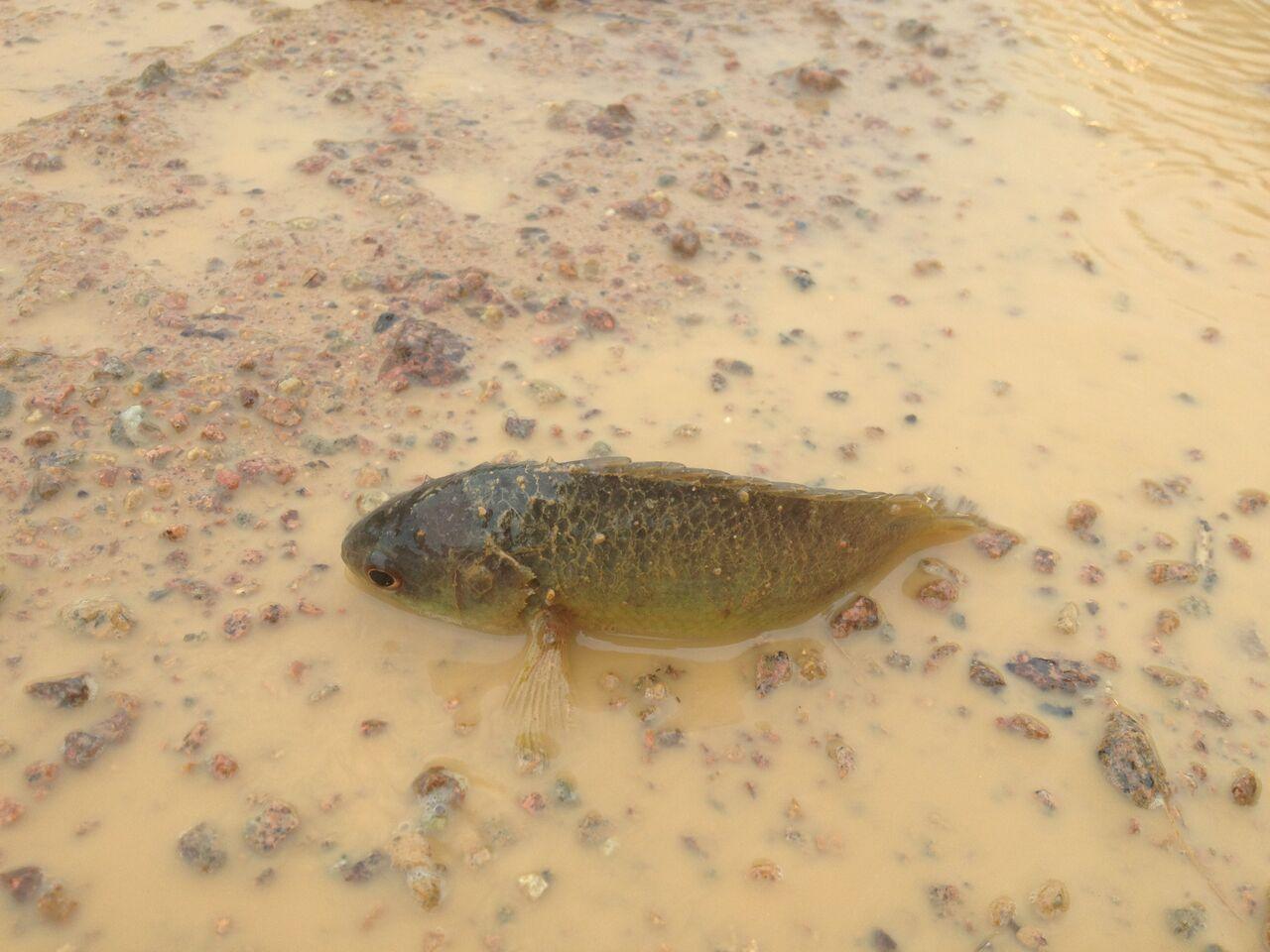Why Australia has a walking fish problem
Climbing perch.
Here's a story about a fish. And this fish isn't staying where it's supposed to be.
We'll get to that in a moment. First, the basics.
The climbing perch is a freshwater fish native to Papua New Guinea, olive green color and about 10 inches long. So not too big, but it's kind of a tough guy.
Dr. Nathan Waltham, a researcher at James Cook University in Queensland, Australia, says its gills cover both sides of its head. "It can extend that out and it can lock those into place. And along the edge of those gill plates are sharp spines," he says.
Waltham is an expert on the climbing perch and what its fierce-looking gills can do.
"They can flex out those gill plates on the side of the head, which means they can actually — with the sharp spines — leverage themselves across land," Waltham says. "So if you can visualize a water hole that's drying up, conditions becoming unfavorable — and this fish can detect that and decide then to move out of that water. So by using those sharp spines [it can] drag itself out, move across land and find a new water hole to take up refuge."
In other words the climbing perch can walk between waterholes. Or, flop rather.
oembed://https%3A//www.youtube.com/watch%3Fv%3DmRiFAWw4-SI
Waltham says the climbing perch can also breathe air and even live out of water for up to six days. And those spines, they're not just for walking.
"If a larger fish or a bird or some other animal tries to eat the climbing perch, it's natural defense is to flex and lock in place those gills," he says. "And in doing that the climbing perch can get caught in the throat and unfortunately in doing that, the animal that's trying to eat the climbing perch is not going to survive."
Which is all fine if the fish stayed in its natural habitat in Papa New Guinea. But the climbing perch is on the move. And this time it didn't walk. It probably hitched a ride on a fishing boat.
Now it's made it to some Australian islands not too far from the mainland. Their presence there could disrupt existing habitats. Waltham is working with local residents to identify and eradicate this invasive species.
Should be pretty easy to spot, right? Just look for the green fish walking from one pond to the next.
